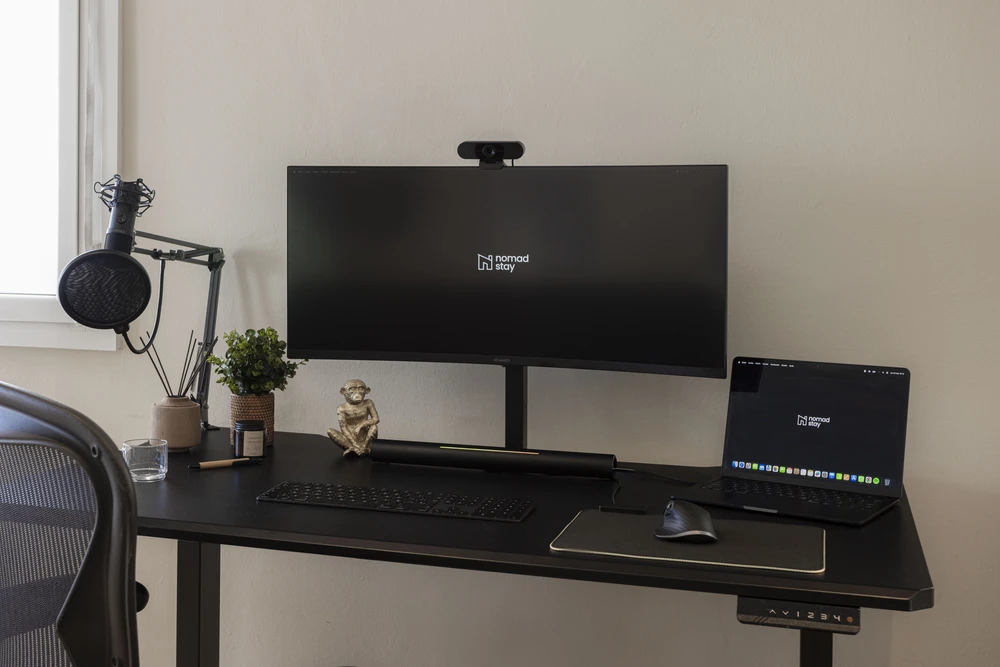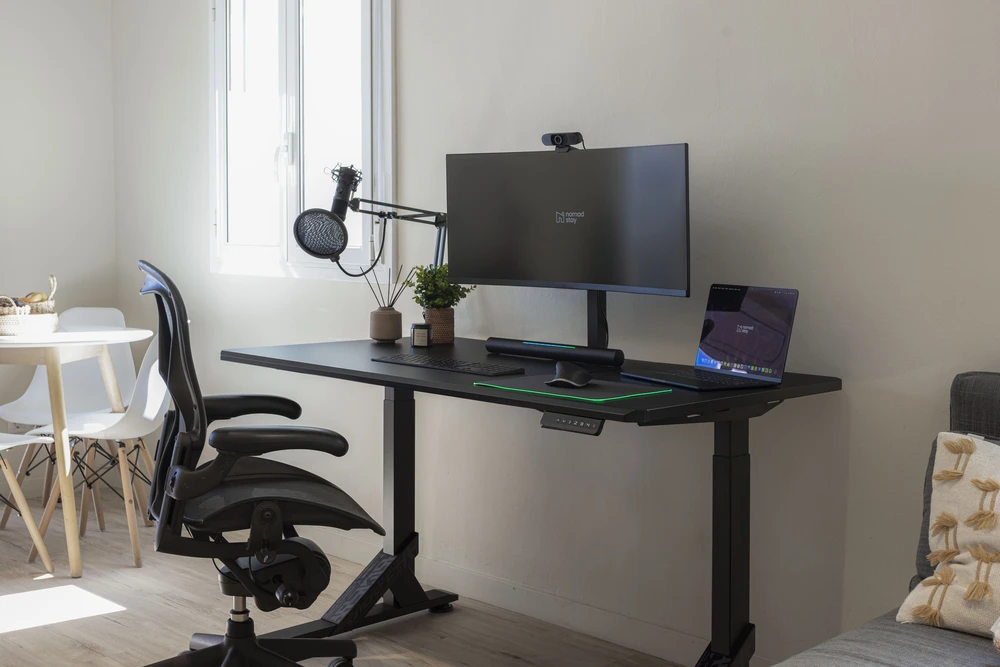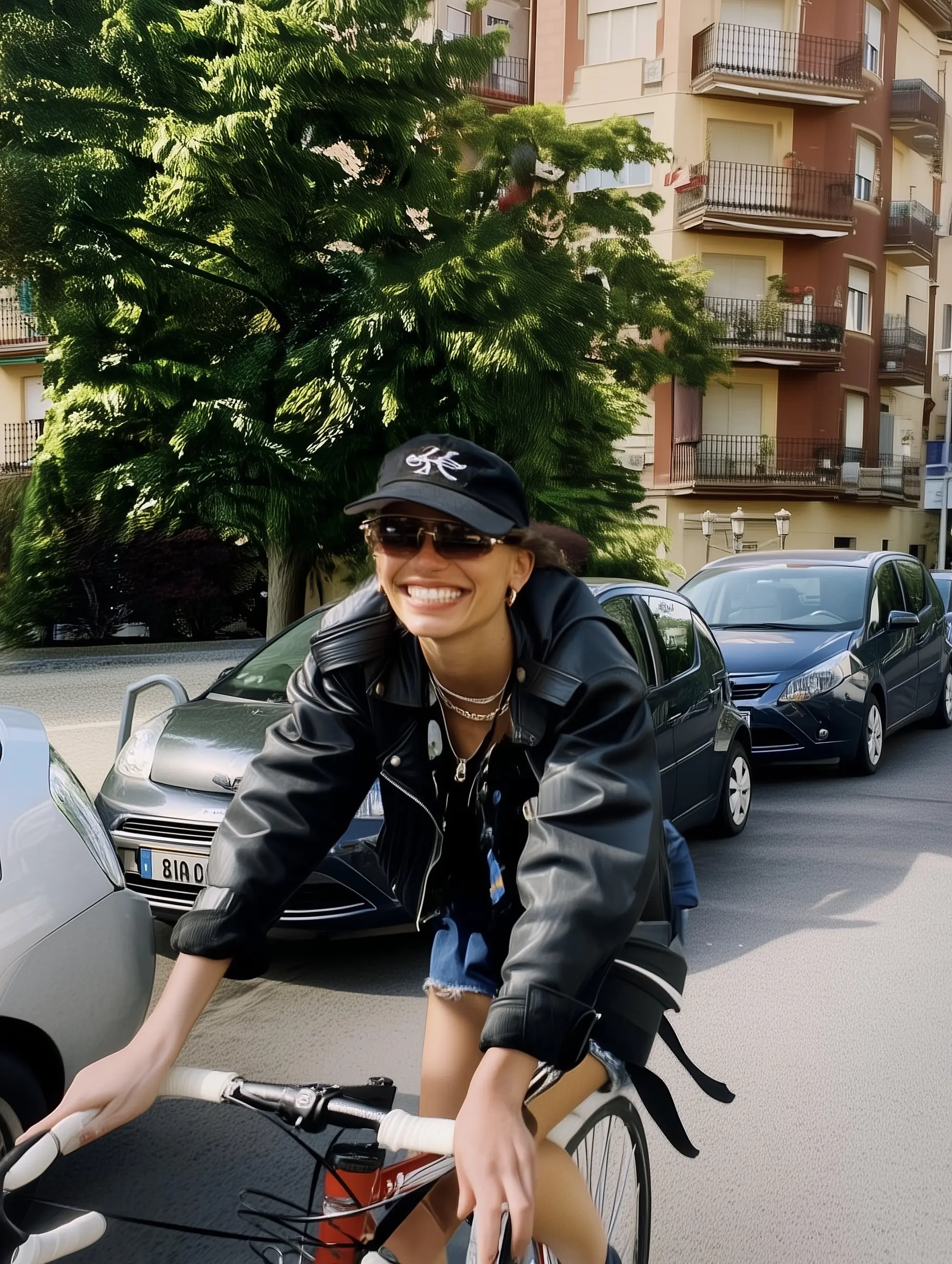Coliving vs. Renting: Cost Breakdown
Explore the cost and lifestyle differences between coliving and traditional renting, focusing on flexibility, community, and overall savings.

Coliving Renting vs. Traditional Renting: Cost Breakdown
Coliving vs. Renting: Cost Breakdown
Looking to save time, money, and hassle on housing? Coliving offers fully furnished spaces with utilities, internet, and amenities included in one monthly payment, while renting requires upfront costs, long-term leases, and managing separate bills. Here's a quick breakdown:
Coliving is a modern and innovative approach to urban living, offering an amazing blend of private and shared spaces that foster a sense of community and connection among residents. This type of communal living is particularly appealing to remote workers, young professionals, and digital nomads who value flexibility, affordability, and the opportunity to form meaningful relationships with like-minded individuals. The carefully curated atmosphere in coliving spaces elevates the living experience, creating a sense of community and enhancing relaxation and productivity for residents.
Cost Comparison: Coliving vs. Renting
Initial Costs
|
Initial Expense Type |
Traditional Renting |
Coliving |
|---|---|---|
|
Security Deposit |
1-2 months' rent |
Minimal or none |
|
Furnishing |
$2,000-5,000+ |
Included |
|
Setup Fees |
Utilities, internet deposits |
None |
|
Ready-to-Use |
No (requires setup) |
Yes (immediate) |
Monthly Costs
When comparing monthly expenses, coliving often proves more affordable and convenient than traditional renting, especially in major cities. For instance, in New York City, a studio apartment typically costs around $3,500 per month, while a coliving space averages $1,799. That's a potential savings of $1,701 each month [[1]](LINK 2).
Traditional rentals require juggling multiple bills, including:
-
Base rent
-
Utilities (electricity, gas, water)
-
Internet service
-
Building maintenance fees
-
Renter's insurance
Coliving simplifies this with all-inclusive pricing, helping residents save money by covering utilities and internet in one payment. This not only saves money but also reduces the hassle of managing separate bills. Additionally, coliving can significantly reduce housing costs by sharing common facilities, making city life more affordable. Additional costs like unexpected repairs or maintenance fees in traditional rentals make coliving even more appealing.
Hidden Costs and Savings
For digital nomads, traditional renting can bring unexpected expenses, such as fluctuating utility bills or surprise repair costs, which can disrupt financial plans and limit mobility. Coliving offers one solution by bundling services into a single payment.
Most coliving spaces include:
-
Maintenance and cleaning services
-
High-speed internet
-
Ergonomic coworking spaces
-
Community events
-
Basic supplies and amenities
This bundled approach ensures cost transparency and adds convenience, making coliving an attractive option for those who value flexibility and streamlined living expenses. Additionally, coliving spaces are creating a supportive environment by facilitating connections among guests and organizing community activities, fostering a sense of belonging and collaborative spirit.
Benefits of Coliving
The benefits of coliving are numerous and varied. For one, coliving spaces offer a cost-effective solution to traditional apartments, as residents can split the costs of utilities, rent, and amenities. Additionally, coliving spaces often provide a range of amenities and services, such as coworking spaces, community events, and cleaning services, that can enhance the overall living experience. Coliving also offers a unique opportunity to connect with others and form new friendships, which can be especially valuable for individuals who are new to a city or looking to expand their social network. Furthermore, coliving spaces are often located in prime urban areas, within walking distance to major cities, public transportation, and local amenities, making it easy to navigate and explore the surrounding area. This combination of affordability, convenience, and community makes coliving an attractive option for many.
Types of Coliving Arrangements
There are various types of coliving arrangements available, catering to different needs and preferences. For example, some coliving spaces offer private rooms with shared bathrooms, while others provide fully furnished apartments with private bathrooms. Some coliving spaces also offer shared rooms, which can be a more affordable option for those on a budget. Additionally, some coliving spaces specialize in hosting specific types of residents, such as students or young professionals, which can create a sense of community and camaraderie among residents. Whether you're looking for a short-term or long-term stay, there's a coliving arrangement that can suit your needs and lifestyle. This variety ensures that everyone can find a coliving space that feels like home.
Amenities and Services
Coliving spaces often provide a range of amenities and services that can enhance the overall living experience. These may include coworking spaces, community events, cleaning services, and fully equipped kitchens. Some coliving spaces also offer additional amenities, such as gyms, rooftop areas, and common spaces, which can provide a perfect mix of work and leisure. Furthermore, many coliving spaces offer hassle-free services, such as utilities and Wi-Fi, which can save residents time and money. With coliving, residents can enjoy a well-maintained and comfortable living space without the hassle of traditional apartment hunting. This comprehensive approach to living ensures that residents have everything they need to live comfortably and focus on their personal and professional goals.
Flexibility and Ease of Use
Flexible Living for Digital Nomads
Unlike traditional rentals, which often lock tenants into 11-12 month leases with strict terms, coliving spaces provide month-to-month agreements. This makes it easier to adapt to changing plans or move to new locations. Discover new cities through coliving and enjoy the flexibility it offers. Notice periods are shorter, and contracts are more accommodating, allowing for smoother transitions.
|
Aspect |
Traditional Renting |
Coliving |
|---|---|---|
|
Lease Duration |
11-12 months minimum |
Month-to-month options |
|
Notice Period |
30-60 days typically |
Often just 2 weeks |
|
Contract Flexibility |
Limited, early termination penalties |
Highly flexible, easy to adjust |
|
Move-in Process |
Lengthy paperwork, credit checks |
Simple, minimal documentation |
Traditional rentals also come with added hassles like setting up utilities and furnishing spaces. Coliving skips these steps with ready-to-use accommodations, including comfortable beds. This saves time and eliminates the stress of managing housing logistics, especially for those frequently on the move.
For digital nomads, coliving spaces are a game-changer. They allow you to:
-
Start working immediately upon arrival in a new city.
-
Network with professionals who share similar goals and lifestyles.
-
Easily relocate between properties in different cities.
Take Rent Remote as an example. It offers fully furnished workspaces and smooth transitions in cities like Barcelona and Lisbon, and provides comprehensive insights for remote workers considering cities such as Barcelona. This setup not only reduces time and effort but also lowers financial risks, making it an attractive option for remote workers.
Coliving isn't just about convenience and cost savings. It also strikes a balance between community living and personal space, which we'll dive into next.
Global Connections
Coliving is not just a local phenomenon, but a global movement that connects people from all over the world. With coliving spaces in major cities such as New York, Silicon Valley, and other urban hubs, residents can become part of a global community that shares ideas, resources, and experiences. Whether you're a digital nomad, remote worker, or simply looking to expand your social network, coliving can provide a unique opportunity to connect with others and form meaningful relationships that transcend borders and cultures. By joining a coliving space, residents can become part of a vibrant and dynamic community that is shaping the future of urban living. This global network of coliving spaces offers a unique opportunity to experience different cultures and lifestyles while maintaining a sense of community and belonging.
Co-Living Changed My Life - Sun & Co, Javea
Lifestyle Comparison: Community vs. Privacy
Choosing between coliving and traditional renting can shape your daily life, especially for digital nomads looking to balance social interaction with personal space.
Coliving spaces are built to promote social interaction and making friends while still offering personal space. They typically include shared facilities and communal areas: Coliving spaces help residents make new friends through shared activities and communal living spaces.
|
Community Feature |
What It Offers |
|---|---|
|
Shared Workspaces |
Opportunities for collaboration and networking |
|
Community Events |
Workshops and social gatherings to connect with others |
|
Common Areas |
Spaces for casual conversations and interactions |
|
Built-in Network |
Access to a group of like-minded individuals |
In fact, research shows that up to 80% of coliving residents feel more connected to their community and other residents compared to those in traditional rentals.
Privacy in Renting
For those who value personal space and independence, traditional rental apartments come with several advantages:
|
Privacy Feature |
What It Offers |
|---|---|
|
Space Control |
Full authority over your living environment |
|
Sound Isolation |
Quieter surroundings with better soundproofing |
|
Customization |
Freedom to design and personalize your space |
|
Independence |
No obligation to participate in social activities |
While coliving options, like those offered by Rent Remote, include private rooms with soundproofing and designated quiet zones, traditional rentals offer a higher degree of privacy and control. The best choice depends on your priorities and budget.
Short stays often benefit from the social perks of coliving, while long-term renters may lean toward the independence of traditional housing. Deciding between these options also involves weighing their financial aspects, which we'll cover in more detail using examples like Rent Remote.
Example: Rent Remote
To highlight the cost and lifestyle perks of coliving, let's take a closer look at Rent Remote, a popular choice among digital nomads.
Rent Remote: A Coliving Solution
Rent Remote offers fully furnished apartments in top European cities, combining the convenience of coliving with the privacy of traditional rentals and the benefits of a shared living space. These apartments are designed with remote professionals in mind, featuring ergonomic workstations, fast internet, and flexible lease terms to support both productivity and ease. Similar to adult dorms, these coliving spaces provide a modern living arrangement where individuals can connect, collaborate on projects, and enjoy social activities together.
|
Feature |
Description |
Cost Savings |
|---|---|---|
|
Ergonomic Workstations |
Dual monitors and professional setups |
Saves €500-1,000 on setup |
|
High-Speed Internet |
Business-grade connection pre-installed |
Cuts €50-100 monthly fees |
|
Pre-furnished Spaces |
Move-in ready accommodations |
Avoids €2,000-3,000 setup |
|
Flexible Leases |
Month-to-month terms |
No penalties for short stays |
Comparing Costs: Rent Remote vs. Traditional Rentals
In Barcelona, Rent Remote apartments start at €2,000 per month. While this might seem higher than typical rentals, the all-inclusive pricing offers clear financial advantages. Costs can vary depending on factors such as location, amenities, and individual preferences:
|
Expense Category |
Traditional Rental |
Rent Remote |
|---|---|---|
|
Monthly Rent |
€1,400 |
Included |
|
Utilities |
€150-200 |
Included |
|
Internet (Setup/Monthly) |
€100 setup + €50 monthly |
Included |
|
Furniture & Workstation |
€3,300-4,000 upfront |
Included |
|
Security Deposit |
2-3 months' rent |
1 month |
For stays of 3-6 months, traditional rentals often require substantial upfront costs for furniture, internet, and deposits, which can vary depending on the location. Rent Remote eliminates these burdens with its all-inclusive model, making it a smart choice for remote workers who value flexibility and convenience.
Rent Remote shows how coliving can simplify expenses while offering a comfortable, work-friendly environment - perfect for digital nomads on the move.
Conclusion: Choosing Wisely
Key Takeaways
Coliving can help lower upfront costs, simplify monthly bills with all-inclusive pricing, and provide the kind of lease flexibility that traditional rentals often lack, all while ensuring a great experience through a positive atmosphere and excellent customer service. For example, in cities like Atlanta, coliving options starting at $719 can save you a lot compared to the average cost of $1,714 for a one-bedroom apartment [[1]](LINK 2).
The financial perks of coliving go beyond just rent, offering:
-
Low initial deposits
-
One monthly payment covering utilities and more
-
Furnished spaces ready for move-in
-
Flexible lease options
Additionally, house rules and the communal environment within shared houses play a crucial role in fostering a sense of community, making coliving an appealing option for many.
Deciding What Works for You
When choosing between coliving and traditional renting, think about these factors:
Total Costs: Don't just focus on the base rent. Factor in setup costs, utilities, and other monthly expenses [2].
Flexibility: If you value mobility, coliving's month-to-month leases might be a better fit. Traditional rentals, on the other hand, are ideal for those planning to stay put [2].
Work Needs: Many coliving spaces, like Rent Remote, come with work-friendly environments, saving you the hassle and cost of finding a separate office setup.
Social Life: Decide whether you prefer a community-focused living arrangement or more personal space and independence [3].
Platforms like Rent Remote demonstrate how coliving can blend affordability, flexibility, and work-friendly features, making it a great option for remote workers. While coliving is perfect for those who prioritize convenience and adaptability, traditional rentals may be better suited for those seeking stability and privacy in the long term.





















